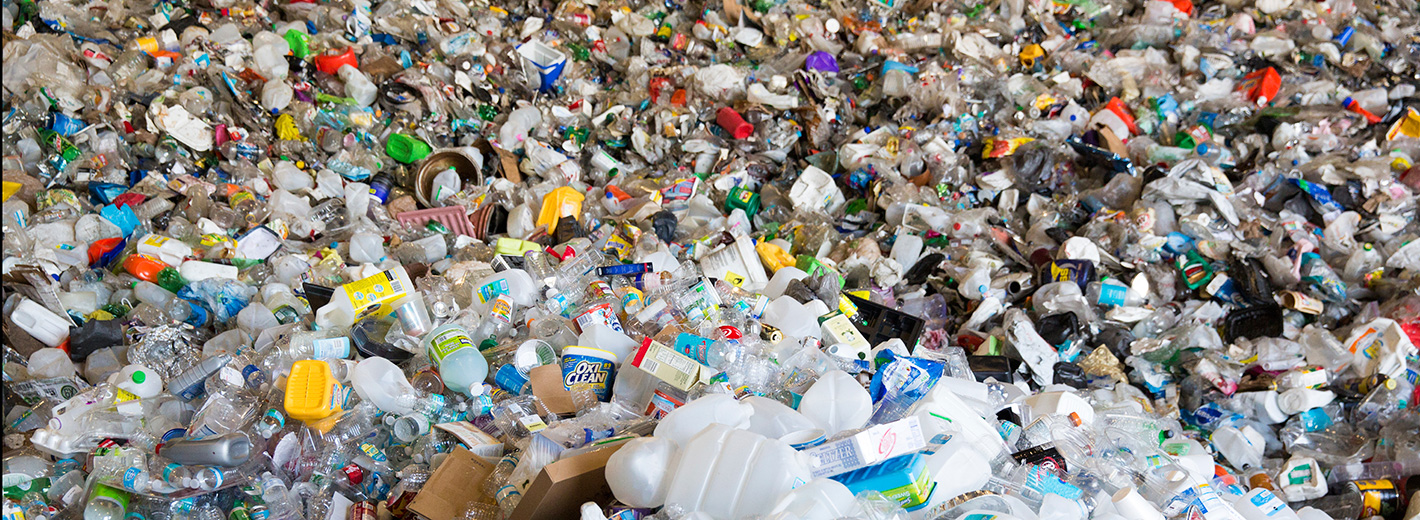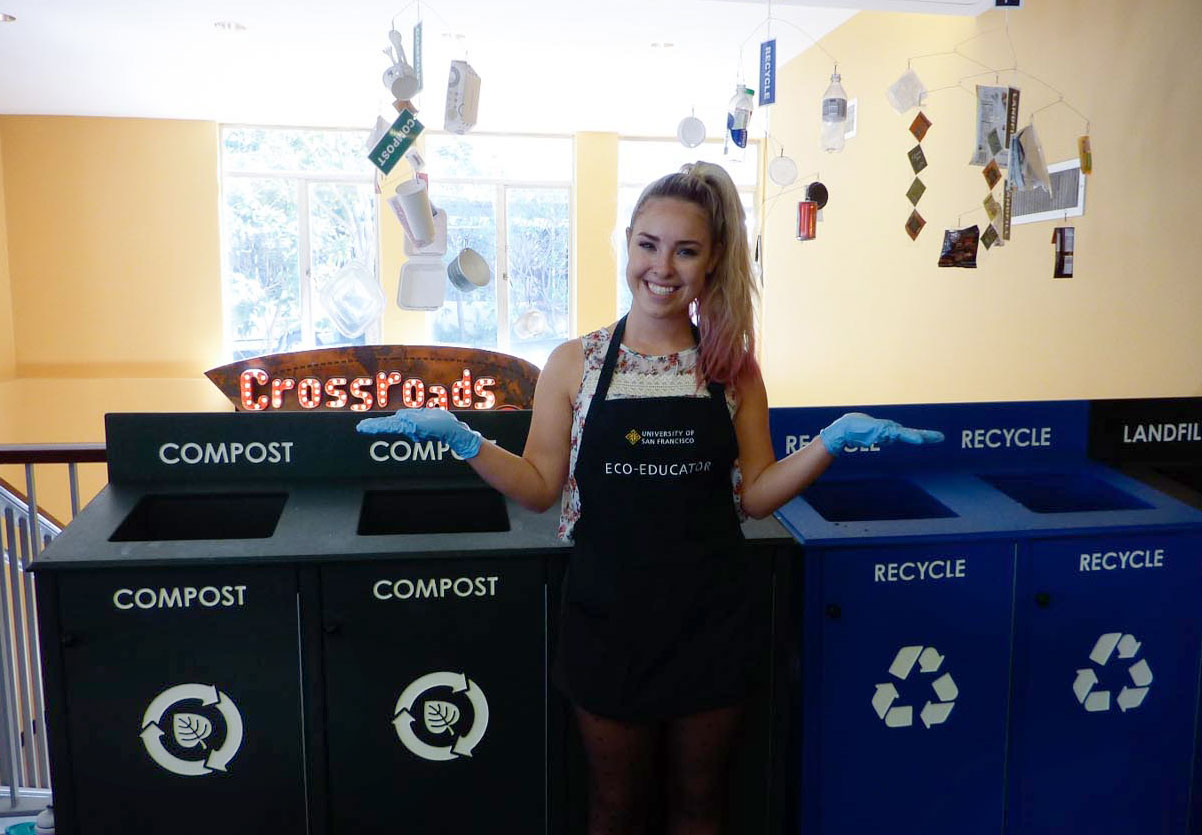
To Rinse or Not to Rinse: Five Ways You Can Up Your Recycling Game
I love talking trash. Good thing, because it’s my job as Bon Appétit’s waste programs manager. So is going on fun field trips — well, fun for me! — such as to Waste Management’s management recycling facility (or MRF) in the outskirts of Philadelphia, where I learned several surprising truths about recycling. I wrote about some of them here in “Dead Animals, Needles and Shards: Recycling’s Bizarre Inner Workings” for Greenbiz.com.
Mainly I learned that it’s a big, messy business — emphasis on ‘business.’ It feels great to put that soda can or paper takeout box in the recycling, because we know we’re playing a small part in conserving the Earth’s resources and not adding to landfills. Because of that feel-good aspect, it’s easy to forget that recycling is actually a multibillion-dollar industry and definitely a for-profit concern.
That means recycling works only if it is financially feasible, and — guess what — it’s not feasible if we do it wrong! Too much food residue in that soup can? Some facilities can’t recycle it. Think it’s OK to throw that plastic shopping bag into your home recycling bin. It’s not; they require a special processing system, and if they make their way into machinery that can’t handle them, the whole system shuts down.
With these five easy tips, you can recycle smarter — and stay part of the solution:
1. Empty containers before recycling.
Food contamination is one of the top reasons why recyclable products get rejected, so make sure to dump out the contents of your beverage container or clamshell before tossing in the recycling bin. They don’t have to be spotless, but they should be pretty free of food residue.

USF student Kathleen Shelton helps guests sort their waste into the right bin
2. Don’t assume something’s recyclable — educate yourself about what is and is not recyclable in your area. When in doubt, you should just throw it out.
If you’re at home, go online to check out detailed recycling guidelines for your city. If dining at school or at work, ask the food service provider to comprehensively label the bins with what can go in them and ask staff if you have questions. Make sure to look for the recycling symbol on your plastics, and if you can’t find it, then the product is most likely not recyclable. The number inside the symbol signifies the kind of plastic — but not every recycler takes every type of plastic: Sometimes the shape is a more important factor in determining recyclability than material.
Also, be sure to check each part of a container for that symbol: just because the base is recyclable, doesn’t mean the lid can be recycled through the same system. For example, in Portland, OR, where I live, I separate out all my plastic clamshells and plastic lids to recycle at my grocery store, because the city itself doesn’t recycle them. If you’re really unsure, it is best to just put the product in the trash, because sometimes a hauler will reject an entire load of recycling if they see too many non-recyclable products in the waste stream.
3. When possible, compost paper products instead of recycling them.
Be aware that not all composting systems accept paper products, and sometimes they only accept specific types, so make sure you know what is acceptable before composting. Going back to tip #2, most recyclers don’t accept napkins, because the paper used to make napkins is at the end of its life and can’t be turned into other products. But usually you can compost them!
4. And speaking of composting, don’t try to recycle bioplastics.
People often wrongly assume that those clear, plastic-looking compostable cups and containers can be recycled when in fact they can’t, and end up gumming up the recycling stream. If the container doesn’t have the magic three-arrow recycling symbol somewhere on it, then it is not recyclable and should go in the trash if there isn’t a compost bin.
5. Reduce your disposables use — preventing waste in the first place is better than recycling it.
I try to carry a reusable spork wherever I go so that I don’t have to use disposable utensils. Visit your local outdoor store for reusable cups, containers, and utensils: the camping versions are usually both compact and light enough to easily tote in a purse or backpack.
OK, so recycling is a lot of work. Is it worth it?
Some people (like this New York Times op-ed writer) argue that recycling itself uses a lot of resources, and we’d be better off just tossing stuff in the landfill. But he doesn’t address the fact that landfills are a huge source of methane, a greenhouse gas that’s 20 to 25 times more powerful than carbon dioxide and a major contributor to climate change. I think that recycling is by no means a perfect system, but it does reduce our dependence on our planet’s finite resources. Ultimately though, it’s best to just reuse, reuse, and reuse — and prevent the need for recycling altogether.